|
|
||||||||||
Embroidery is a somewhat debated issue in the Viking Age reenactor scene. Yes—I am aware that "Vikings" arguing about embroidery sounds kind of funny, but it is true! ^^ The problem is actually a very basic (and presumably also historically accurate) one, namely that many of us like to look and dress nice. But with modern access to an overabundance of fabric, patterns and strong colors, this has a tendency to lead to overdoing things in a way that then tbecomes historically inaccurate. And for many, embroidery in particular has become a pet peeve. This is not to say that embroidery wasn't used in this era at all: For example, we have well-preserved findings of elaborate embroideries on clothing in the Mammen find (1) in Denmark (dated to 970-971). These embroideries depicted leaves, masks, animals and birds, and the yarn contained a lot of iron and copper which may derive from the dyeing process (2). While the surviving textiles consist of silk and wool, many additional needle holes illustrate possible linen embroidery that has since decayed. The same grave contained fragments of dye stuff from Poland or Armenia, tablet weaving of purple silk and silver, fur, golden sequins, and needlebinding in golden and silver threads. The man in this grave (or the people who buried him at the very least) sure knew to appreciate the bling! Other examples are the multicolored embroideries of animals, spirals and geometrical patterns from the Oseberg grave here in Norway—which were possibly made in the British isles (3) and may have been used to decorate the clothing (dated to 834, 4). While we can conclude that embroidery was definitely used during the Viking Age, it would by no means be common in the elaborate way and size of my forecloth which I commissioned from a friend. That piece in particular seems to cause debate when someone posts an old photo of mine in some group on social media such as here, even though I wouldn't have posted it in a group dedicated to historical accuracy myself, or worn in to an event with stricter requirements. Anyway, let's call this "disclaimer" sufficient for now, and on to the topic of my most recent creation that I really want to share with you! I actually made it during my Yule holidays, but due to busy times at work I couldn't get around to posting it earlier. I wanted to try embroidery for the first time myself, and commit to posting it here however crooked and imperfect it might be, so that I will be able to show some progress over the years to come. I chose a pattern based on "the Lady of Tuna", a gilded silver pendant from Sweden dated to the Viking Age (5). She is wearing a shawl over her dress, and a cape with a long train. Her hair (or possibly her haircloth) forms an Irish knot hanging down her back. Some have interpreted the large circles on top of her chest as a possible exaggerated depiction of Freya's necklace Brísingamen, or of a brooch with pearl rows (6). 
I used light Icelandic "einband" wool thread for the outline, on pure wool canvas left over from a tunic I made for my loved one a couple of years back. If you follow me on Instagram, you might have seen some of the process: For the filling I used various wool threads that I had lying around from previous sewing projects, including some yarn where I actually had to separate the strands and wax them. 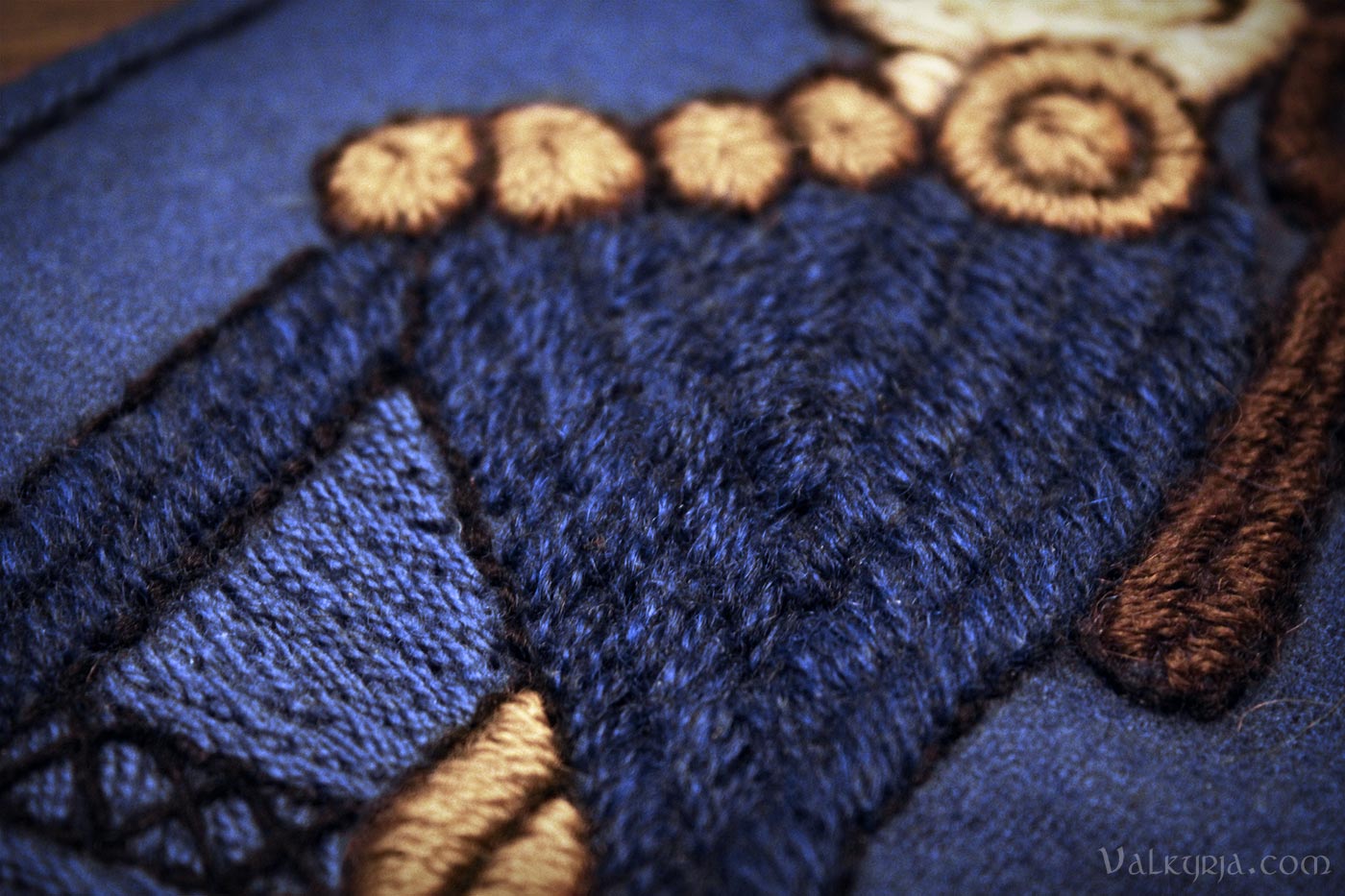
Embroidery done—but what should it decorate? I wanted to make a Birka bag, which is very similar to the Hedeby/Haithabu bag that I've made previously. It's is a clever historical design, where two identical wooden handles shape the bag, and rope is put through holes on each end of the handles to function as a shoulder strap (while also making the bag firmly closed when worn). Many handles for such "bracket purses" have been found in Hedeby, and underwater excavations in 2014 (7) at the harbor in Birka (which was a trading centre in Sweden during the Viking Age) revealed several similar handles but with a somewhat different design. I ordered reconstructions of one of the Birka handles from Taberna Vagantis, and to my pleasant surprise they showed up in my mailbox already a couple of days later. While the handles have been relatively well preserved, less is known about the rest of the bags, how they looked and what they consisted of. The only fabric remaining are some fibers of thread or cord found in the holes in at least one of the brackets from Hedeby, but the bag itself could have been made of cloth, leather, or even some sort of net, as can also be seen in much later iconography of similar bags in Medieval manuscripts (8). I chose to go with wool fabric, and to line it with linen to make it less stretchy. 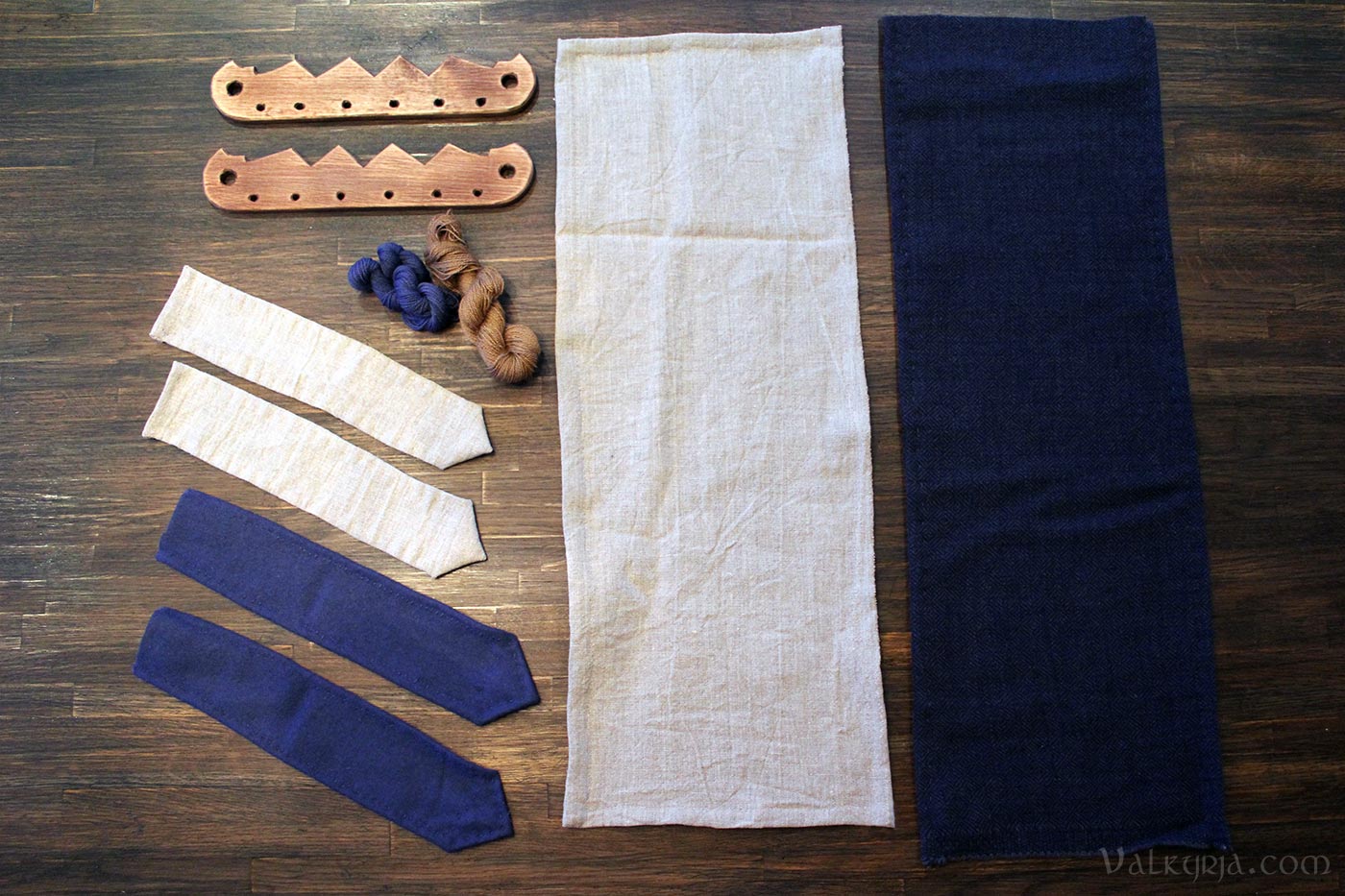
I wanted to remedy the issues I have experienced when using my previous Hedeby bag, where I have found the opening a bit to narrow, and also to prevent the lumpy look the bag gets when being filled with various stuff. I therefore decided to make side panels in addition to the front and back. All the fabrics are leftovers from previous sewing projects, namely dove blue wool from one of Christian's tunics, blue/grey diamond twill from one of my Hedeby apron dresses, and linen from an underdress. 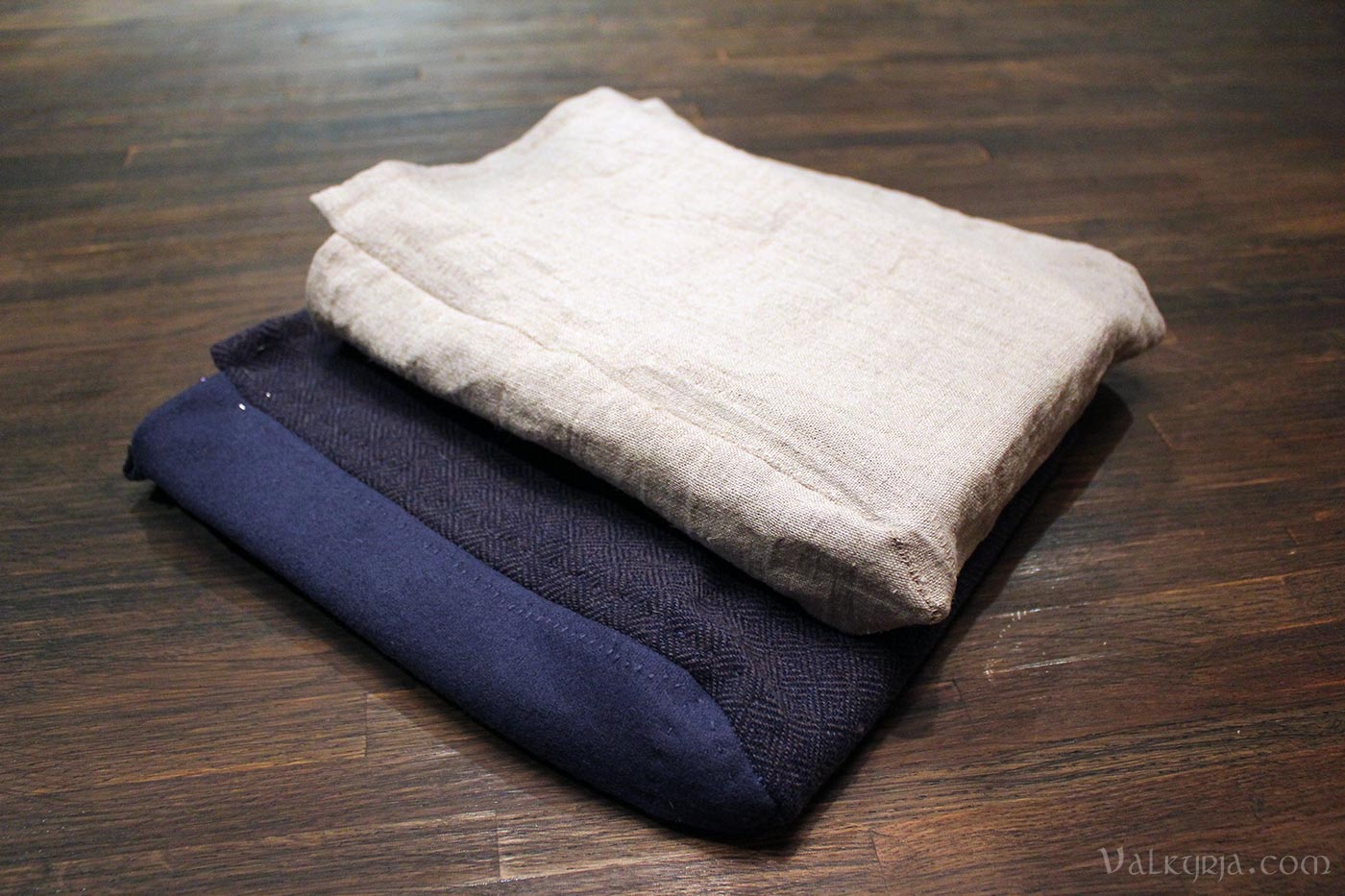
The final assembled product: 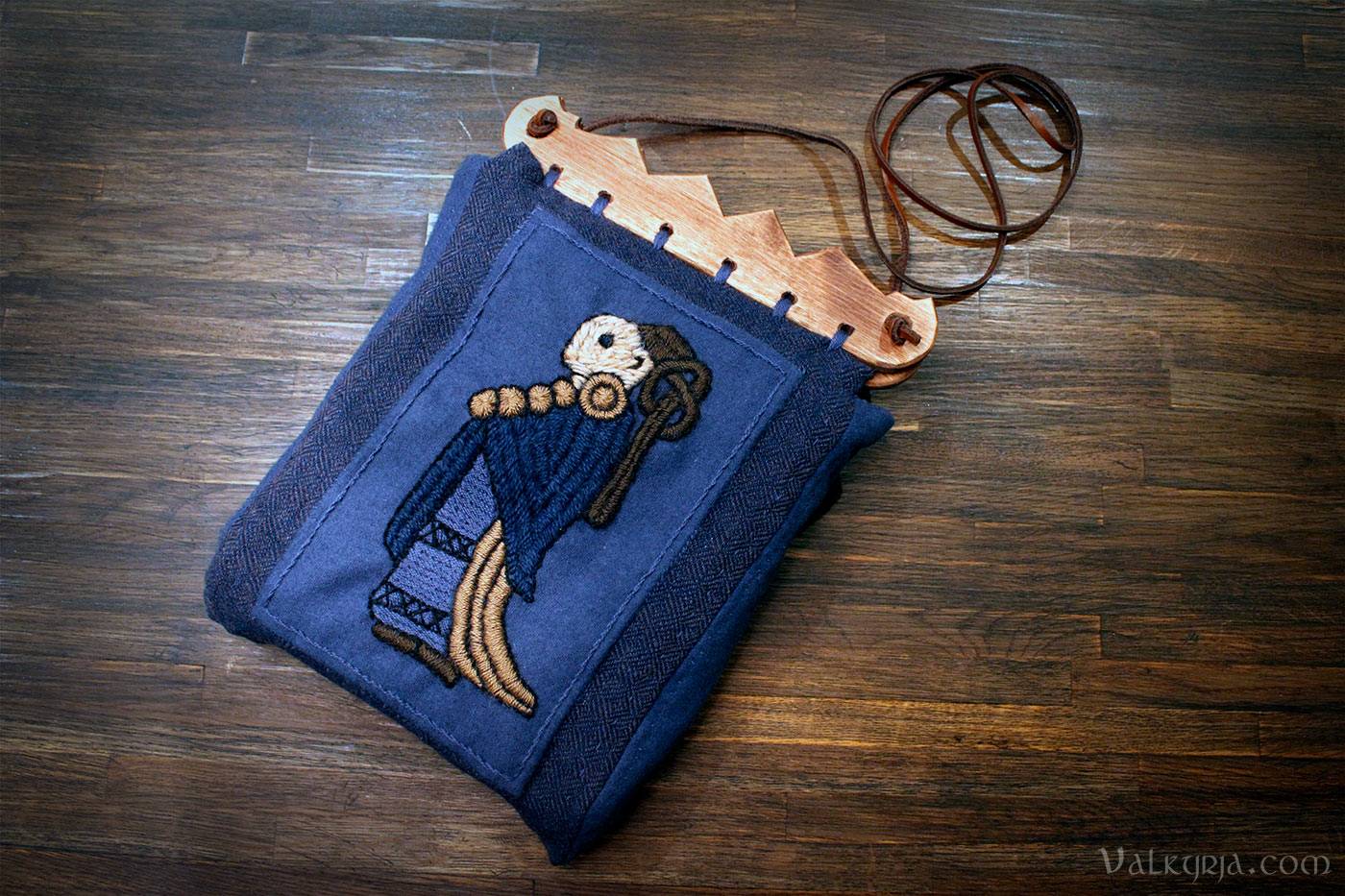
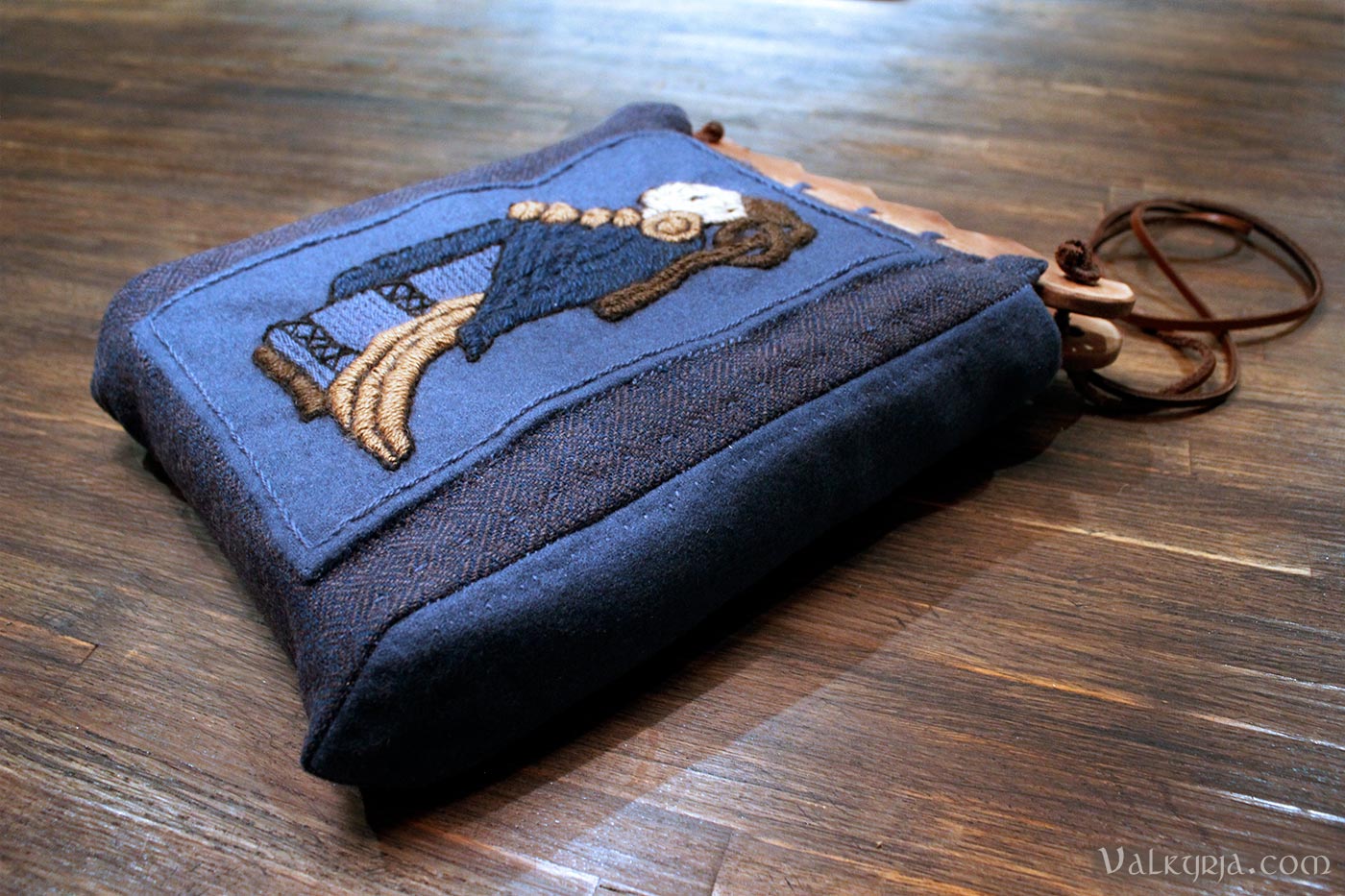
Recent empirical testing (from this weekend) proves that it can comfortably hold my SLR camera, needlebound mittens, and a bottle of mead. ;-) Music: Cornelius Link - Blinding Lights # Comments |
 
|
|||||||||
|
||||||||||
